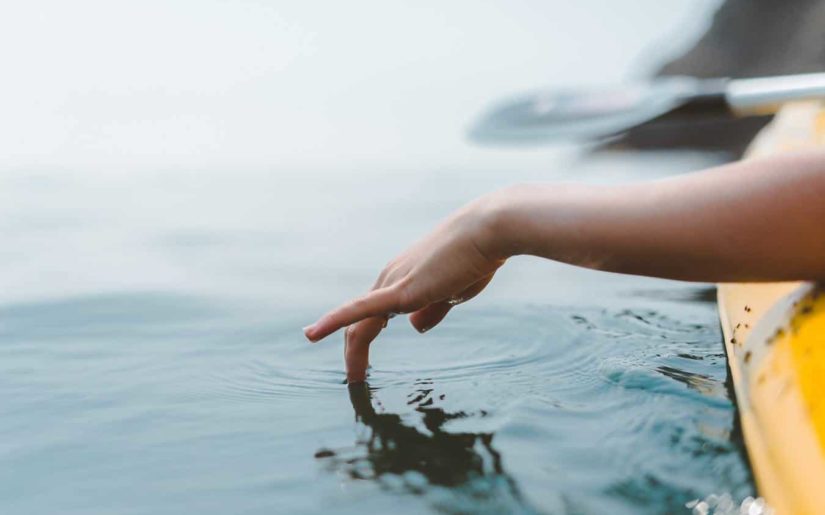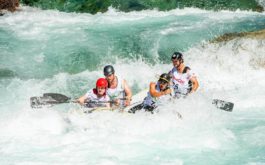Whitewater kayak designs have evolved quickly and drastically. They are a mere shadow of what they once were. They’re shorter, flatter, and blunter; yet the basic maneuverability still comes from the same place…the knees.
Knee support
Old school kayak instructors used to put a lot of emphasis on a person’s hips; edge with your hips, roll with your hips, turn with your hips. But the fact is the edging of a Whitewater kayak, whether it’s a flat-bottomed play boat or a round-hulled race boat, isn’t controlled with your hips but with your knees.
Experienced kayakers can get into any sized boat and maneuver it expertly as long as their knees are able to touch and control the thigh and knee braces. Of course, having a good footrest in the correct location is also important. What’s not important, however, is the hips. It may be more comfortable if the hips are snug in the boat seat, but it’s not a requirement for effective kayak control.
Old school kayakers used to spend hours forming their boat seats to fit just right. Shaping the mini-cell foam with gritty sandpaper until their fingers were raw and bleeding. Unless you’re masochistic this simply isn’t necessary. Spend the time getting your knee location just right. Move the seat back and forth if you need to. If you need to work with foam to enhance your knee hooks, it’s time well spent.
Adjustments
In order to have good knee support you need good foot rests. Most new play kayaks have blow-up, or foam block foot rests. The old heavy adjustable foot pegs are simply too big to fit into these tiny kayaks. In order to get your feet in the correct spot, you don’t want them so far away that when you’re relaxed your legs fall away from the knee hooks. A little leeway is ok, but if your knees fall more than 2 inches, you need to tighten them up.
Most of your boat control comes from your knees; at least it should. When Whitewater kayakers find themselves getting into a difficult situation, or even when they’re trying to throw a difficult play move, the natural reaction is to push with their feet. When this occurs, the knees will immediately fall away from the knee hooks and there goes your stability. Unless the knees are re-engaged with the boat, you’ll lose control and probably get slammed.
Having your foot rests in a good position will help keep the knees in the correct place even when things make you want to push. If you ever find yourself in a situation where you feel you’re losing control of the boat, take a quick assessment of your knee placement. If you’re pushing with your feet and your knees aren’t touching the boat, correct it and you’ll have a much easier time bringing your boat under control.
As kayaks have evolved so have kayak-instructing methods. No longer will you hear kayak instructors talking about hip control. Controlling a Whitewater kayak is much easier if you concentrate on what your knees are doing in the kayak.









